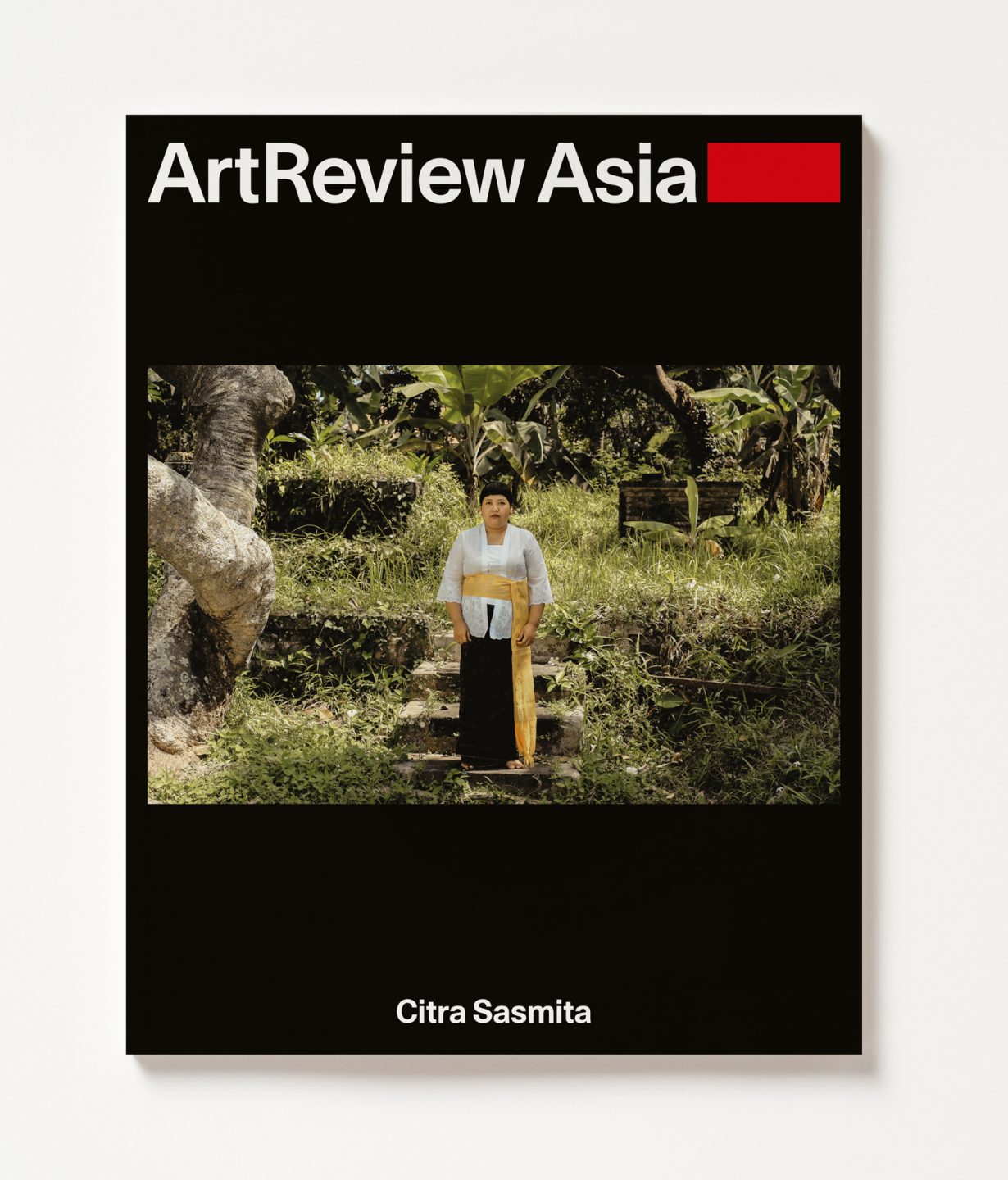Featuring Citra Sasmita, Shuang Li, Soumya Sankar Bose and Nawapol Thamrongrattanarit; an interview with Hiroshi Sugimoto; an artist project by Hylozoic/Desires; essays on the ‘Hijab Revolution’ and Thailand Biennale; and much more

ArtReview Asia’s Winter issue features cover artist Citra Sasmita. Best known for her largescale installations and paintings on fabric scrolls, the Balinese artist renders Indonesia’s violent colonial history in the style of Kasaman painting – a highly detailed traditional artform (typically executed by male artisans) used to depict myths and romances from Hindu and indigenous sources, and which was thought to have been influenced by court art from the East Javanese Majapahit Empire. Sasmita subverts the genre of painting by centring the female form in what were historically depicted as masculine discourses. While the paintings’ images are violent (there are severed heads, pools of blood, bodies on fire or split open), there is also a sense of the feminine divine: ‘Her work celebrates a universal, unending and revelatory cycle of change that flows through living beings, rending them and stitching them together again, in an eternal process of becoming and unbecoming,’ writes Adeline Chia. Sasmita’s latest work will be on view at Thailand Biennale in December.
Stephanie Bailey considers the growing role of fandom in the work of Chinese artist Shuang Li, whose obsession with American rock band My Chemical Romance subconsciously filtered into a performance titled Lord of the Flies, staged at Shanghai’s Antenna Space in 2022. Dressing 20 performers identically as her avatars, Li had each of them seek out her closest friends and read aloud personal letters she had written, while each avatar sported a tartan skirt, leg warmers, black boots, a silver backpack – and the band’s T-shirt over a white shirt. ‘By focusing on a mass-produced item’s transformation into a point of potent communication between individuals,’ writes Bailey, ‘Li highlights a cycle coded into global capitalism, where alienation produces a commodifiable demand for life-affirming connection, and signals the possibility of rerouting it – something that fandom mirrors.’
What kind of life does a story contain in the absence of its teller? Does it cease to exist? Does it find voice through future generations? These are questions Najrin Islam asks of Indian photographer Soumya Sankar Bose’s most recent and ongoing series of work, A Discreet Exit through Darkness (2020–, its most recent iteration on show at Les Rencontres d’Arles), which takes the form of photography, film and sound in an attempt to piece together several lost years in which the artist’s mother went missing as a child. Through eerily staged and haunting photos that describe his own family’s experience, Bose interrogates the social and cultural pressures of silence and the corruption of public narratives, and reflects on how ‘the figure of the ghost in the Indian subcontinent constitutes a para-archive of sociopolitical anxieties’.
Also in this issue
Max Crosbie-Jones takes time to look back at Thai filmmaker Nawapol Thamrongrattanarit’s career, which spans shorts and feature-length films, as well as quirky commercials. What makes his work connect with youth culture? An ingredient list of ‘interpersonal relationships, how technology is shaping the experience and argot of a generation, humour as release, for pent-up ennui, fitting in and finding your place’. Lance Henderstein talks to Japanese photographer Hiroshi Sugimoto, while his works are on show at London’s Hayward Gallery; Himali Singh Soin and David Soin Tappeser (known as Hylozoic/Desires) present Namak Nazar, an artist project that considers the elemental, philosophical, spiritual and historical role of salt; a year on from the ‘Hijab Revolution’, Frances Forbes-Carbines listens to the voices of continuing protest in Iran, collected in a new anthology titled Woman Life Freedom: Voices and Art from the Women’s Protests in Iran (2023); and in the runup to Thailand Biennale in Chiang Rai, Max Crosbie-Jones pauses to consider the origins of Chalermchai Kositpipat’s staggering cultural power.
Plus
Reviews including Seoul Mediacity Biennale; Jogja Fotografis Festival 2023; Cosmic Beings at Cement Fondu, Sydney; Jinjoon Lee at Korean Cultural Centre UK, London; World Classroom at Mori Art Museum, Tokyo; and much more.